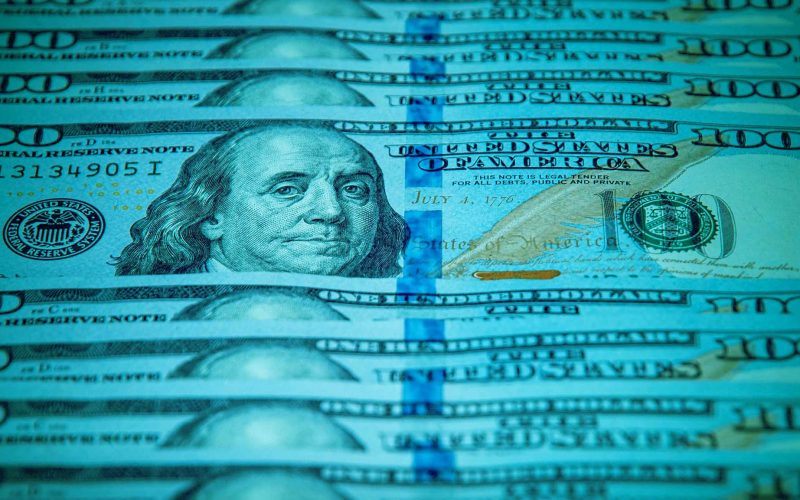by Chris Brightman, Research Affiliates
Key Points
- Trillions of dollars of deficit spending financed by money creation over the past two years caused today’s soaring inflation.
- Our enormous government debt may constrain the Fed from raising interest rates by enough to tame inflation.
- Equity markets are beginning to price the rising risk of stagflation.
- Investors are repositioning portfolios to protect the real value of their financial capital.
To offset the economic consequences of the pandemic, the Treasury worked hand in glove with the Fed over the past couple of years to transfer trillions of newly created dollars into bank accounts of individuals and corporations. As I wrote two years ago, this policy was “a necessary humanitarian effort to keep our economy functioning through this COVID crisis. By propping up aggregate demand, we aim to prevent a larger than necessary decline in economic output. Failing to do so would risk a depression and profound human suffering.” I went on to warn that “…many more dollars will be chasing a smaller amount of goods and services. The result will be inflation.” Now, the inflation rate that consumers experience, CPI, is galloping above 8%. The inflation measure that the Fed believes it can control, core PCE, is expanding at a rate above 5%.
The bond market is pricing a swift return to low and stable inflation. Investors ought to beware of the risk of interpreting this implicit forecast from bond prices as an unbiased estimate of the future path for interest and inflation rates. The past few decades of low and stable inflation have taught a couple of generations of bond traders not to fight the Fed. When the Fed publishes a dot plot displaying its forecast of future rates, bond traders follow the Fed’s lead, even though these publicly communicated dot plots have been notoriously inaccurate at turning points.
Recognize that inflation expectations can become a self-fulfilling prophesy. Expectations of higher inflation cause people to ask for higher wages and set product prices higher, feeding future inflation. Hence, the Fed understandably seeks to manage such expectations. In so doing, they risk credibility. For example, they almost comically retired the word “transitory” in November 2021 after their failed effort to “talk down” inflation.
The Fed waited too long to tighten and now needs to act aggressively. Capital markets have panicked as investors try to anticipate how soon the Fed will be able to reduce inflation back to target; the amount of tightening of financial conditions and the magnitude of the rise in real interest rates that will be required; and whether this tightening will cause a recession.
Four Cyclical Scenarios
Soft Landing. Let us assume today’s bond market pricing is spot on. Today’s nominal 10-year Treasury yield is near 3% and 10-year BEI is also near 3%, thus providing a 10-year real TIPS yield of about zero. The 5-year BEI of 3.5% assumes that CPI falls toward 2% soon given that today’s year-over-year CPI is running at 8.5%. If the Fed manages to achieve this benign path for inflation and interest rates as implied by the bond market, without causing a recession along the way, then the recent decline in stock prices may be behind us. While the present S&P 500 earnings yield of a little above 4% is well below its long-term average of 7%, it provides a reasonable risk premium relative to today’s long-term real rates of 0%.
Recession. Today’s bond market pricing might be right, but the required tightening, taking the fed funds rate to 3% by early 2023 along with aggressive quantitative tightening, may cause a recession. If so, we may expect the stock market to price in a higher risk premium until it perceives the end of the recession. Stocks would likely fall further from here, but valuations may remain within the elevated range we have experienced in the 21st century.
Prolonged Inflation. If the Fed fails to tame inflation, then both stock and bond prices have further to fall. When investors price inflation as a prolonged problem, BEI will rise along with nominal rates. Investors will suffer losses in their bond portfolios. In this scenario, expect the equity risk premium to rise and stock prices to decline. History, and common sense, teaches that high inflation coincides with high volatility of inflation, interest rates, and equity prices. Volatility in capital market prices is like a thermometer displaying an elevated temperature. It reveals a disease. Following this analogy, the disease is flawed economic policy. High volatility raises risk premiums and lowers stock prices.
Stagflation. If the Fed fails to tame inflation and we have a recession or two, then expect capital markets to behave as in the late 1970s and early 1980s. Interest rates will soar toward or above the-then current rate of inflation. Equity prices will tank and P/E multiples will contract. In the last period of stagflation, Shiller’s CAPE fell to below 10 in 1977, bottomed at 7 in 1982, and failed to rise back above 10 until 1985. With today’s CAPE well above 30, a fall even just to 10 implies a frightful decline in stock prices.
Secularly Rising Real Rates
Zero and negative real interest rates are not normal. As Larry Summers first explained back in 2020, the global economy has been in a savings glut, which has persisted for the past two decades, thereby reducing real discount rates and raising P/E multiples. China’s mercantilist growth model, US corporations’ pursuit of monopoly profits through financial engineering and low investment, and underinvestment in public infrastructure across the developed world all contributed to this excess of desired savings over actual investment.
Central banks also contributed to negative real rates as an unintended consequence of quantitative easing. QE is explicitly designed to lower the cost of capital to support asset prices and thereby growth. QE exacerbates wealth inequality because the wealthy few own most of the world’s capital. People living paycheck to paycheck largely consume an increase in their wealth. Elon Musk, Jeff Bezos, Bill Gates, and Warren Buffett just save more.
To get inflation back under control, the Fed may need to raise interest rates above the level of expected inflation. Unfortunately, today’s huge public debt, now over 120% of GDP versus just over 30% at the end of the 1970s, may not allow such a steep rise in nominal rates. Continued money creation may be required to service our debt when interest rates rise.
The Fed controls the level of short-term nominal interest rates. Can it control long-term real rates? Three secular forces are increasing the demand for real investment and thereby likely raising the global level of equilibrium real interest rates: increased military spending; reshoring of supply chains and manufacturing capacity (chip fab plants and rare-earth mining, for example); and dramatically increasing investment in sustainable energy, including renewables, nuclear, and smart power grids.
“
Three secular forces are increasing the demand for real investment and thereby likely raising the global level of equilibrium real interest rates.
”
Implications for Investors
The stock market, until recently, was pricing a soft-landing scenario. As recent economic data have begun to show persistent inflation and slowing growth, the stock market has become worried about a recession. Today’s rising recession expectations make sense given the history of recessions following past inflation surges.
I perceive at least even odds that the Fed fails to get inflation under control soon. How can a fed funds rate of 3% tame CPI running at 8% and core PCE at 5%? I also see at least even odds that we experience a recession before the end of 2023. I see a greater than one-in-three chance of both events happening—high inflation and a recession, or stagflation. In this scenario, both stock and bond prices will suffer.
If I am correct, investors will wish to reposition portfolios to protect the real value of their financial capital. They may reduce exposure to equity beta and nominal duration by selling mainstream stocks and bonds in favor of commodities and real assets, whose prices have historically risen in response to rising inflation. Investors may protect the real value of their bond principal by swapping out of nominal bonds into TIPS. Lastly, as is evident from recent movements in stock prices, investors will flee from longer-duration growth stocks and rotate into lower-duration—and exceptionally cheap—value stocks in their equity portfolios.
“
I see a greater than one-in-three chance of…high inflation and a recession, or stagflation.
”















